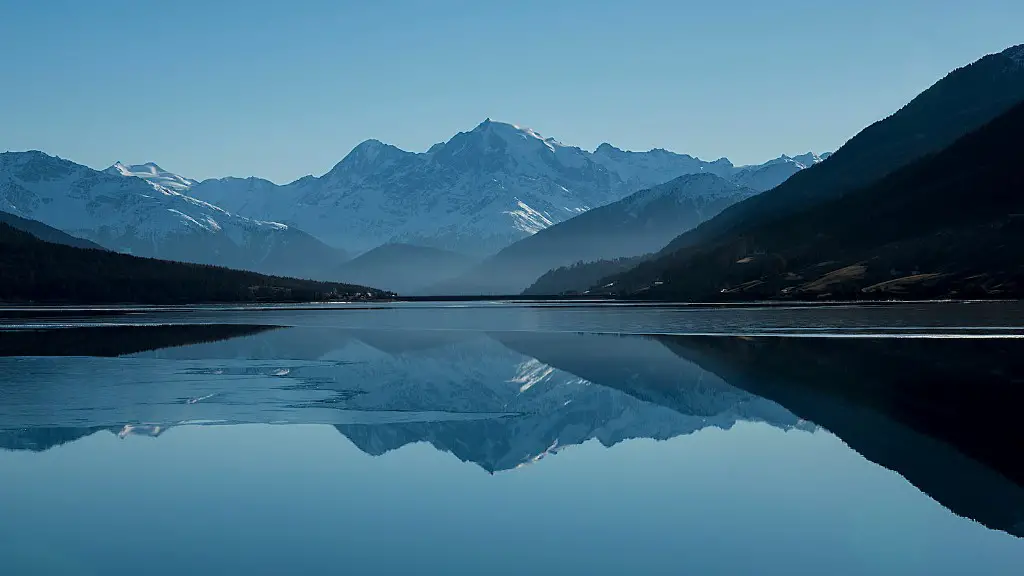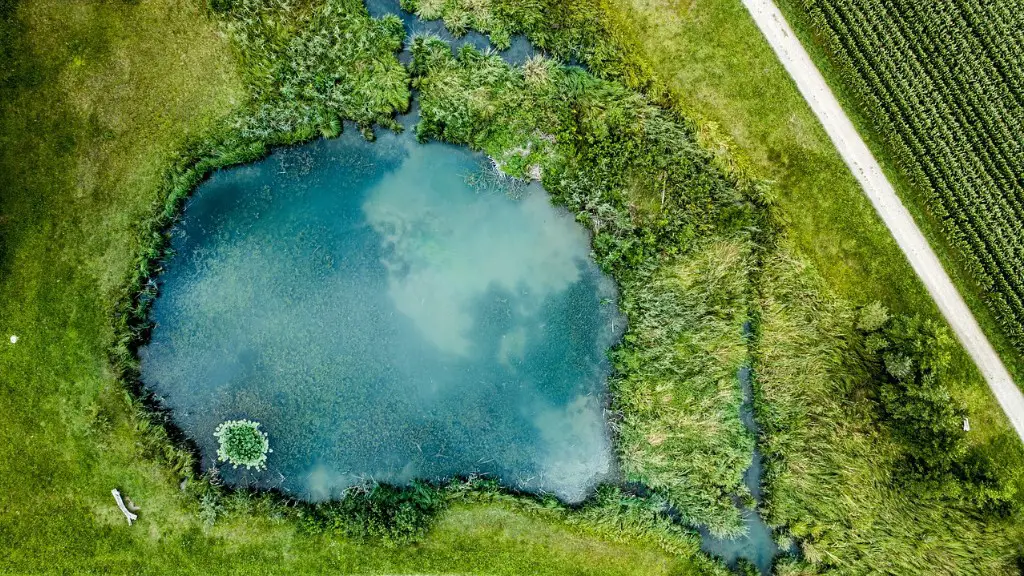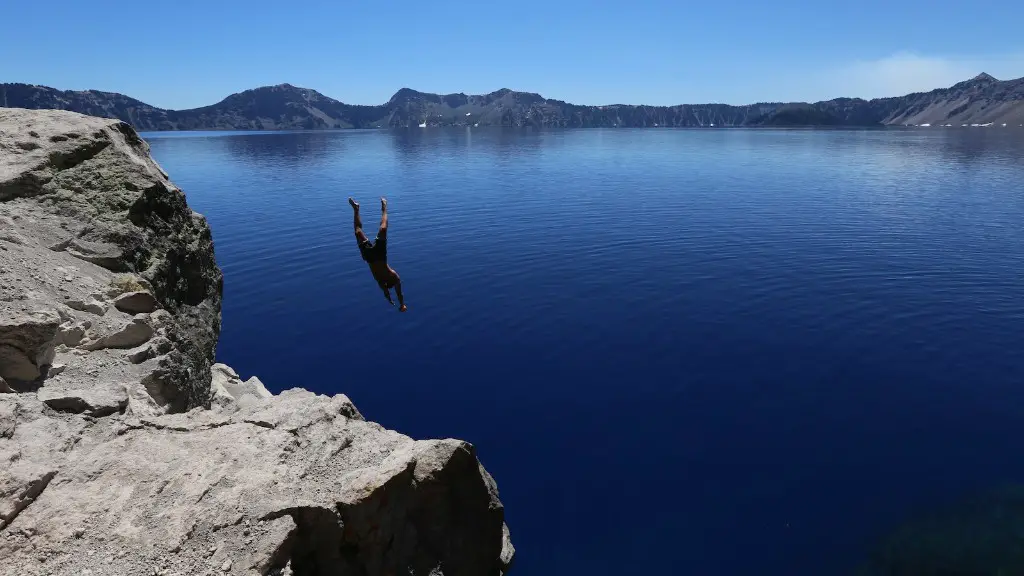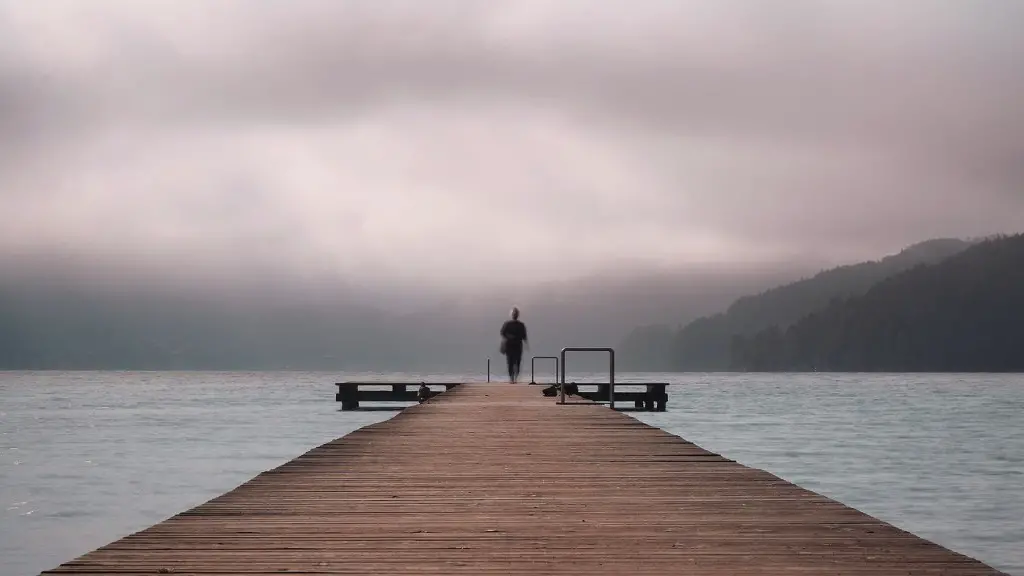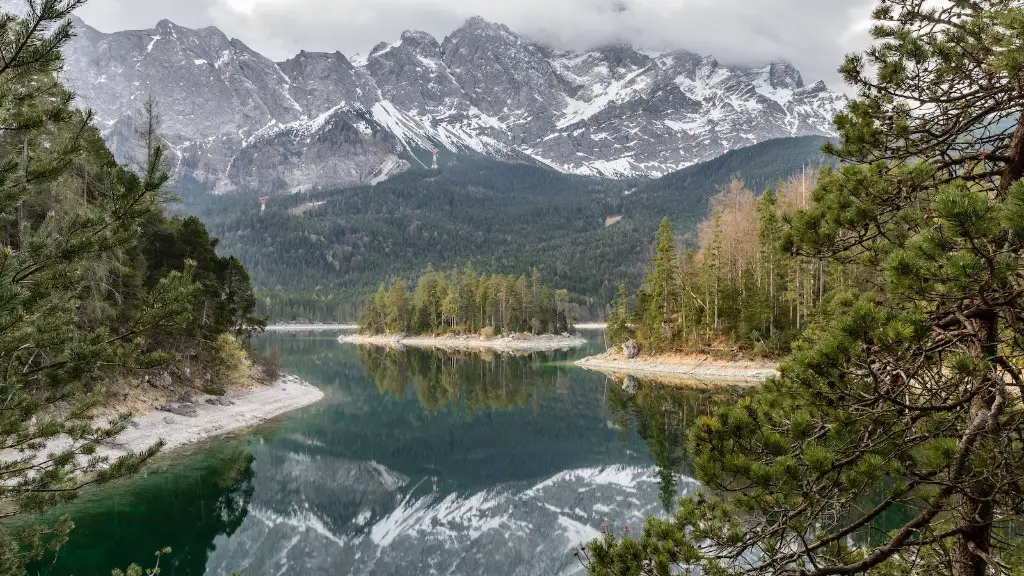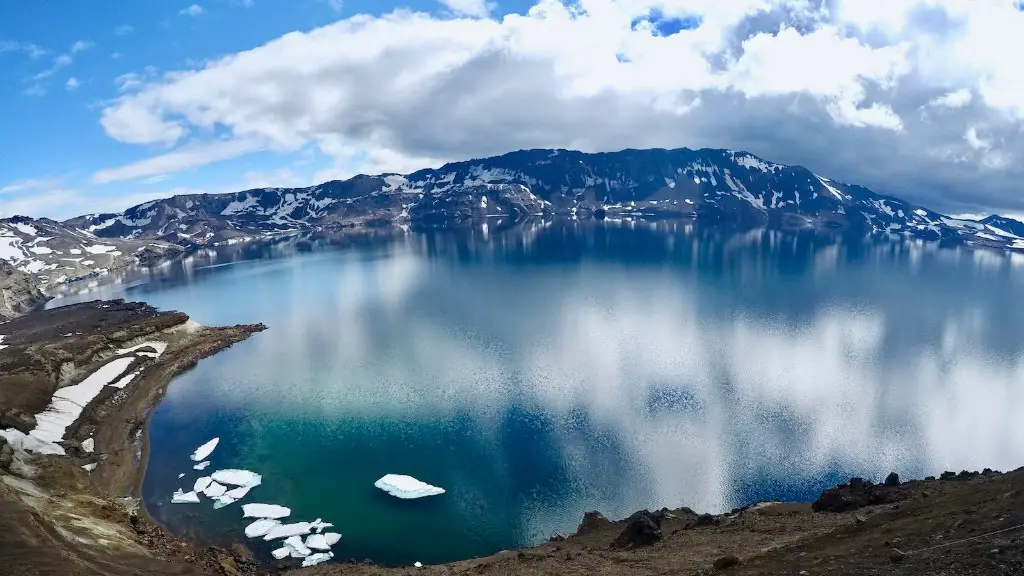As the largest of the Great Lakes, Lake Superior has a reputation of being a powerful, untameable force. But even this mightiest of lakes has its limits and one of the most enduring questions people have about it is does Lake Superior freeze in winter?
The short answer is yes, it does indeed freeze during some winters. Although every winter is different, Lake Superior commonly has some areas of ice on the lake that last for days, weeks, or months at a time. This can have a huge impact on the local ecology and weather and has been monitored for many years with satellites, buoys and other monitoring devices.
The most extreme winter recorded on Lake Superior was in 1979-80 when 80% of the lake’s surface was solid ice. Even big ships could cross large sections of the lake without having to break any ice. The majority of winters, however, are typically much milder and only about 15-30% of the lake’s surface is likely to be covered in ice for any significant length of time.
So why does Lake Superior freeze differently than other Great Lakes? One key factor is its size. Lake Superior is larger than the other Great Lakes combined, so the chances of having cold air temperatures remain at the average water temperature is higher. Cold air temperatures cause influxes in cold water temperatures and this can eventually lead to freezing.
In addition to size, Lake Superior’s shape also plays a role in its ability to freeze. Unlike Lake Michigan and Lake Huron, Lake Superior is shaped like a bowl and most of the ice accumulates in its center, leaving the edges open to large waves and harsher weather. This means that even though parts of the lake might freeze, those areas may eventually become areas of open water again as the wave action and currents continue.
The freezing of Lake Superior is also affected by its depth. At its deepest, Lake Superior is around 400 m, much deeper than the other Great Lakes. The top few meters of lake water also take the longest to cool down as compared to shallower water temperatures. This means that any ice forming on the lake will likely start near the edges and become more uniform over time, eventually being spread further out into the lake.
What Are the Implications of Frozen Lakes?
Frozen lakes, like Lake Superior, have a profound effect on the environment. Not only do they impact the local ecology of plants and animals, but they also can cause changes in weather patterns and increase the risk of flooding. As the lake’s surface freezes, it creates a layer of insulation over the lake. This prevents the lake from releasing its heat into the air, meaning that it doesn’t contribute to the surrounding air temperatures. This can have a huge impact on local weather, creating colder temperatures and increased snowfall events during the winter months.
The extreme cold from frozen lakes also affects the plants and animals living in and around them. A frozen lake can prevent fish and other aquatic animals from getting enough oxygen and can also disrupt the food chain if animals can’t get enough to eat. Plants may also be impacted if the lake’s surface is completely frozen for an extended period of time as the plants may not be able to absorb enough light for photosynthesis.
Not only can frozen lakes impact the local environment, but they can also be dangerous for people. Every winter, people flock to frozen lakes for activities like ice fishing and skating, little knowing or thinking about the potential danger of falling through the ice. Although some lakes may seem safe, they can still be deceptively dangerous due to varying thickness of the ice and hidden currents beneath the surface.
Do Lake Superior’s Ice Cover Levels Change Yearly?
Lake Superior does experience yearly changes in its ice cover which are largely determined by the weather. The lake’s ice cover levels can vary from year to year and from one area to another. Generally, the lake’s ice cover will expand in colder temperatures and begin to shrink in warmer temperatures. This means that although Lake Superior can freeze in winter, the ice cover levels are highly dependent on the weather conditions.
The data collected on Lake Superior’s ice cover levels also reveals some climatic trends that can be used to predict the lake’s potential for freezing. For example, recent data shows that the ice cover on the lake has been expanding over the last few decades and this could be an indication that temperatures in the area are getting colder.
Overall, the trend of increased ice cover on Lake Superior suggests that it is becoming a more freeze-prone lake. This could potentially lead to more frequent cold spells in the region and could have a significant impact on the local environmental conditions and aquatic life. Therefore, it is important for local communities to be aware of how their local ecosystems are changing and to take appropriate steps to ensure their safety during the winter months.
What Are The Economic Implications Of Frozen Lakes?
The freezing of Lake Superior in winter can have profound economic implications for local communities. Many of these communities rely on fishing and tourism for their livelihood, both of which can be negatively impacted by freezing temperatures and ice cover. Fishing is especially susceptible to the freezing of lakes and rivers, as this can make it much more difficult to access fish or to even find them in the first place.
On the other hand, tourism that involves being on the lake or near it can also be negatively impacted. The risk of slips and falls increases during icy conditions and people may not be able to take part in activities such as skiing and snowmobiling if it is too dangerous to do so. This can have a huge impact on the local economy, as businesses and organizations associated with these activities may be forced to reduce their operations or even shut down for the season.
Not only does frozen Lake Superior impact economic activities, but it can also lead to increased danger from flooding. As the lake’s surface freezes, it creates a layer of insulation that prevents it from releasing its heat which can cause higher temperatures in the surrounding areas. This can increase the amount of snowfall and the frequency of thawing and freezing cycles which can greatly increase the risk of flooding in the region.
Ultimately, frozen lakes can be drastically different from unfrozen ones. This can have both positive and negative impacts on the local environment and economy, and it is important for people to be aware of how their local environment is changing in order to take the necessary steps to ensure their safety during the winter months.
Does Climate Change Affect The Freeze Of Lakes?
The relationship between climate change and the freezing of lakes is complex and highly interconnected. The temperature of the air and the water play a large role in how much the lake is likely to freeze and it is thought that with continuing climate change, air temperatures will continue to increase and have an impact on the freezing of lakes like Lake Superior.
The effects of climate change can also lead to increased snowfall in certain parts of the world, which can also contribute to ice cover on lakes. The increase of snowfall can lead to colder temperatures near the lakes and the colder temperatures can lead to more ice cover. Warmer air temperatures, on the other hand, can lead to less winter snowfall and, in turn, less ice cover on the lake.
As climate change continues and temperatures rise, it is expected that the frequency of frozen lakes, like Lake Superior will decrease. This means that the lake and local communities may become less accustomed to dealing with the cold and icy conditions associated with frozen lakes. As a result, it is important for local communities to be aware of how their local environment is changing and to adjust their activities accordingly.
Are There Any Solutions To Dwindling Lake Superior Freeze?
Although the threat of the Lake Superior freezing less and less with climate change is a real one, there are several steps that can be taken to slow down the process. One of the most important and effective is proper land-use management. Deforestation, urbanization, and other developments can all have a negative impact on the environment and lead to increased temperatures. By managing land use properly, it is possible to minimize the effects of climate change on the lake and other bodies of water in the area.
In addition to land use management, it is also important to promote sustainable energy sources. By reducing our dependence on fossil fuels and moving towards renewable energy sources such as solar, wind, and water energy, it is possible to reduce the amount of greenhouse gas emissions that are released into the atmosphere and thus help reduce the impact of climate change on the environment.
Finally, the use of renewable and recyclable materials can also aid in preserving the environment and the freezing of Lake Superior. By using materials such as wood, paper, and cotton instead of plastic and other synthetic materials, it is possible to reduce the amount of resources that are being used and create less waste in our environment. This can help reduce the amount of pollution in the lake and, in turn, help keep temperatures lower.
Overall, the freezing of Lake Superior is a natural process but one that can be highly impacted by climate change. In order to maintain the lake’s health and help preserve its icy cover, it is important for local communities to take the necessary steps to reduce the effects of climate change, such as land use management, sustainable energy sources, and the use of renewable and recyclable materials.
